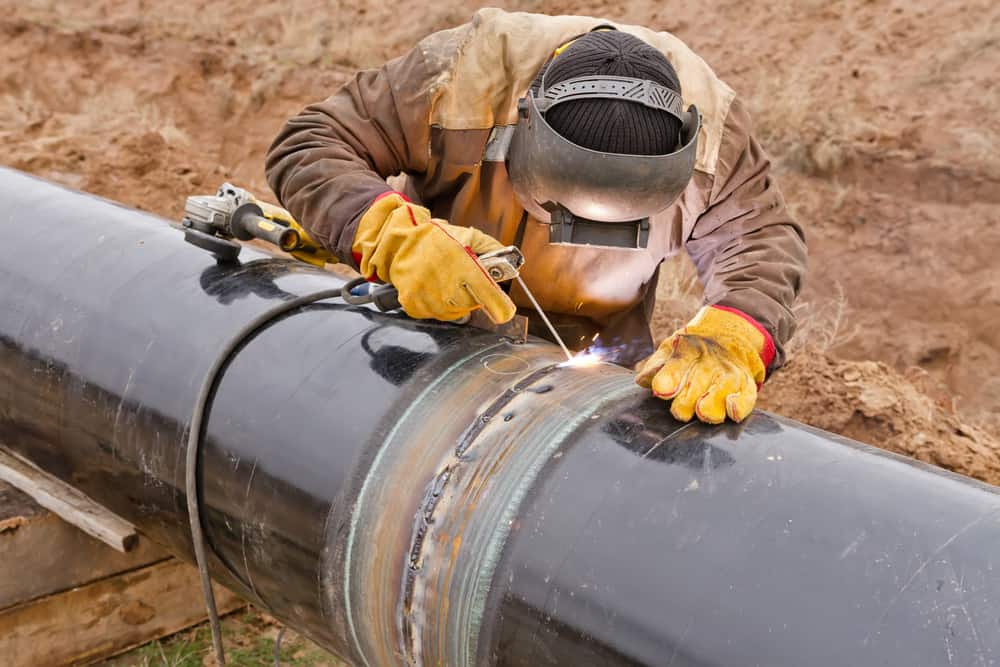Keep Code-Compliant: Specialist Pipeline Welding Inspection Tailored to Your Requirements
Comprehensive Review of Pipe Welding Examination Treatments
In the realm of pipe building, making sure the stability and safety of welded joints is critical. Pipeline welding examination treatments play a crucial function in ensuring that welded links fulfill rigid industry requirements and specs. From thorough pre-welding assessments to comprehensive post-weld evaluations, a well-defined assessment procedure is necessary for preserving the structural stability of pipelines. Recognizing the intricacies of welding inspection procedures is not just a regulatory requirement but also a fundamental aspect of maintaining the integrity of these critical frameworks.
Pre-welding Evaluation Preparations
Prior to starting the welding procedure, extensive pre-welding examination preparations are vital to make sure the stability and quality of the weld joint. These prep work entail a thorough exam of the products to be bonded, the welding equipment, and the work environment. The materials must be examined for any type of flaws, pollutants, or incongruities that can jeopardize the weld. This includes monitoring for appropriate material qualities, dimensions, and surface area problems. Pipeline Welding Inspection. Furthermore, the welding equipment needs to be examined to confirm that it is in great working condition, adjusted properly, and ideal for the specific welding procedure. Any type of concerns with the equipment must be attended to promptly to avoid defects in the weld. Finally, the job atmosphere must be examined for sanitation, correct air flow, and safety procedures to guarantee a conducive setting for the welding procedure. By performing complete pre-welding examination preparations, possible concerns can be identified and solved at an early stage, bring about dependable and top notch weld joints.
Welding Treatment Credentials
Complete pre-welding evaluation preparations lay the structure for the crucial procedure of Welding Procedure Certification, guaranteeing the stability and top quality of the weld joint. Welding Treatment Credentials (WPQ) is an important action in the welding procedure that involves screening and licensing welding treatments to guarantee they fulfill certain criteria and requirements. The WPQ procedure commonly consists of welding treatment specification advancement, welding treatment qualification screening, and documents of the outcomes.
During welding procedure specification growth, important details such as the welding procedure, welding products, joint design, and welding parameters are defined to produce an extensive procedure. Subsequently, welding procedure credentials screening is performed to verify the proposed treatment's integrity. This testing usually entails welding examination vouchers that are subjected to numerous mechanical and non-destructive tests to evaluate the weld's high quality and adherence to the specified criteria.
In-process Weld Evaluation
During the welding procedure, in-process weld evaluation plays a critical function in guaranteeing the top quality and honesty of the weld joint - Pipeline Welding Inspection. This sort of assessment includes keeping track of the welding parameters, assessing the weld bead development, and finding any type of possible flaws or interruptions as they take place. By conducting in-process weld inspections, welding drivers can immediately deal with any kind of problems that might emerge, thereby preventing additional flaws and making sure that the final weld meets the needed specs
Usual techniques used for in-process weld evaluation consist of aesthetic inspection, liquid penetrant testing, magnetic bit screening, ultrasonic screening, and radiographic testing. In general, in-process weld evaluation is necessary for keeping the quality and dependability of welded pipelines.
Non-destructive Testing (NDT)
Non-destructive Testing (NDT) is an essential method used in pipeline welding evaluation to examine the stability of weld joints without causing damage to the browse around these guys bonded structure. By utilizing numerous NDT techniques, examiners can review the top quality of welds and recognize any type of defects or websites stoppages that may jeopardize the architectural stability of the pipeline. Usual NDT approaches used in pipe welding evaluation consist of Radiographic Screening (RT), Ultrasonic Testing (UT), Magnetic Particle Examining (MPT), Liquid Penetrant Testing (LPT), and Visual Screening (VT)
RT entails the use of X-rays or gamma rays to produce photos of the interior framework of the weld, enabling inspectors to identify defects such as porosity, cracks, or incomplete blend. Furthermore, VT entails aesthetic examination of welds to identify any noticeable blemishes.
Post-weld Assessment and Paperwork


Documents of post-weld inspection findings is crucial for maintaining high quality control documents and ensuring conformity with sector standards and policies. Thorough records ought to include information regarding the evaluation techniques used, the area and nature of any kind of flaws discovered, and any type of rehabilitative activities taken - Pipeline Welding Inspection. Correct paperwork not just works as a try this web-site record of the weld's high quality but likewise help in future maintenance and evaluation procedures
Verdict

In verdict, pipe welding assessment treatments play a critical duty in making sure the quality and honesty of welds. On the whole, adherence to appropriate assessment procedures is essential to the success of pipeline welding projects.
From careful pre-welding examinations to thorough post-weld assessments, a distinct assessment procedure is vital for preserving the structural stability of pipelines. By carrying out in-process weld evaluations, welding operators can promptly deal with any kind of concerns that may arise, therefore making sure and avoiding further issues that the last weld fulfills the required specifications.
Typical approaches made use of for in-process weld inspection include aesthetic evaluation, fluid penetrant screening, magnetic bit testing, ultrasonic testing, and radiographic testing.Non-destructive Testing (NDT) is an important approach employed in pipe welding inspection to evaluate the honesty of weld joints without causing damages to the bonded framework. Post-weld examination entails different techniques to assess the welds for problems, including visual examination, color penetrant screening, magnetic particle testing, ultrasonic screening, and radiographic testing.